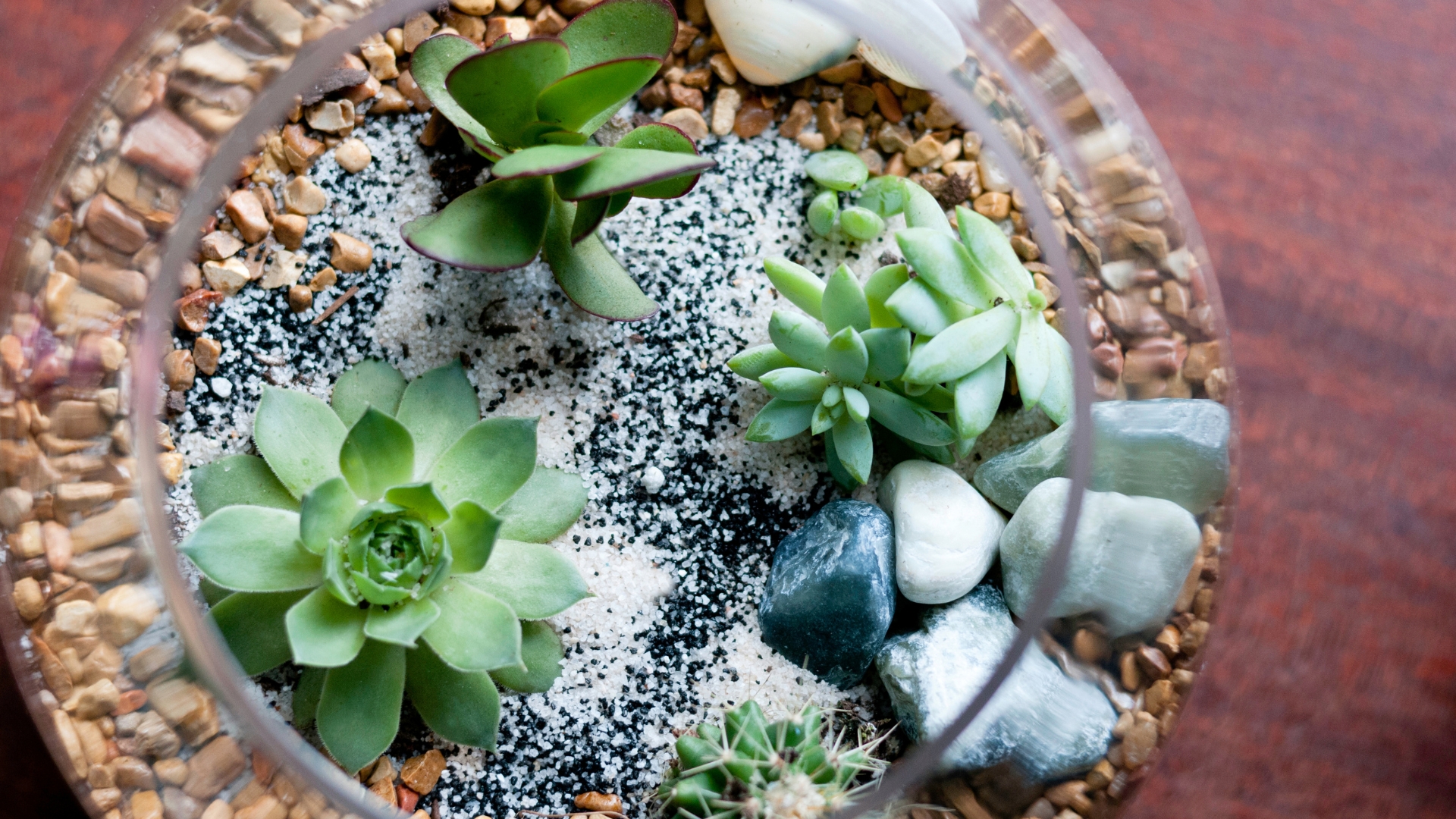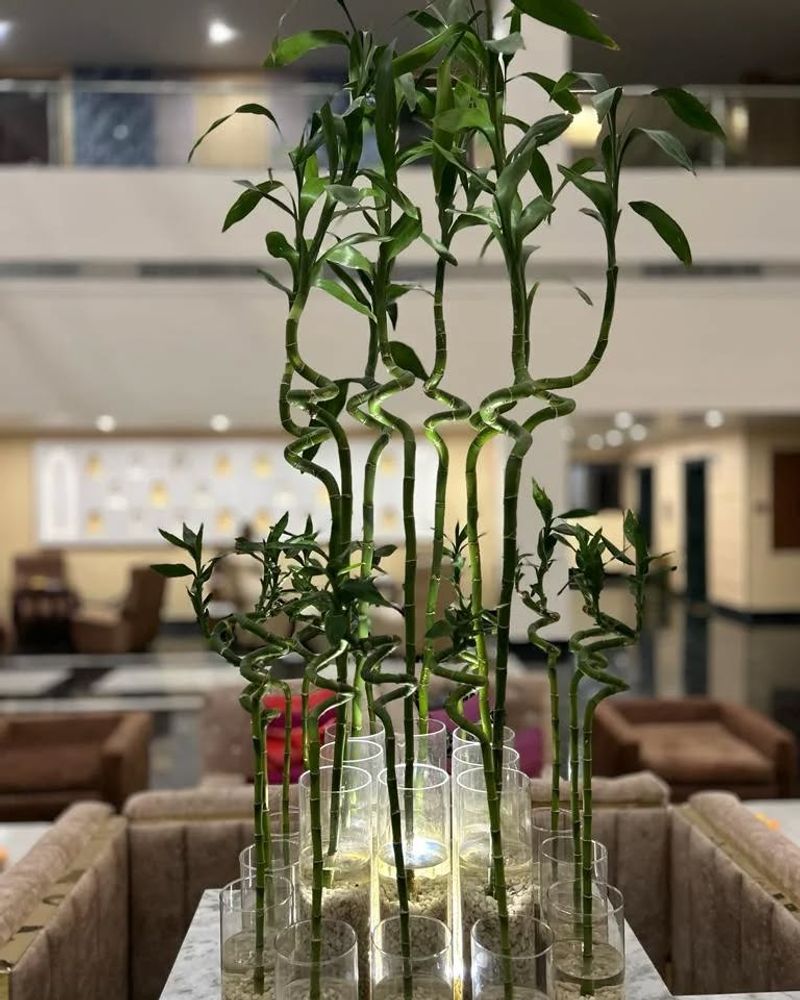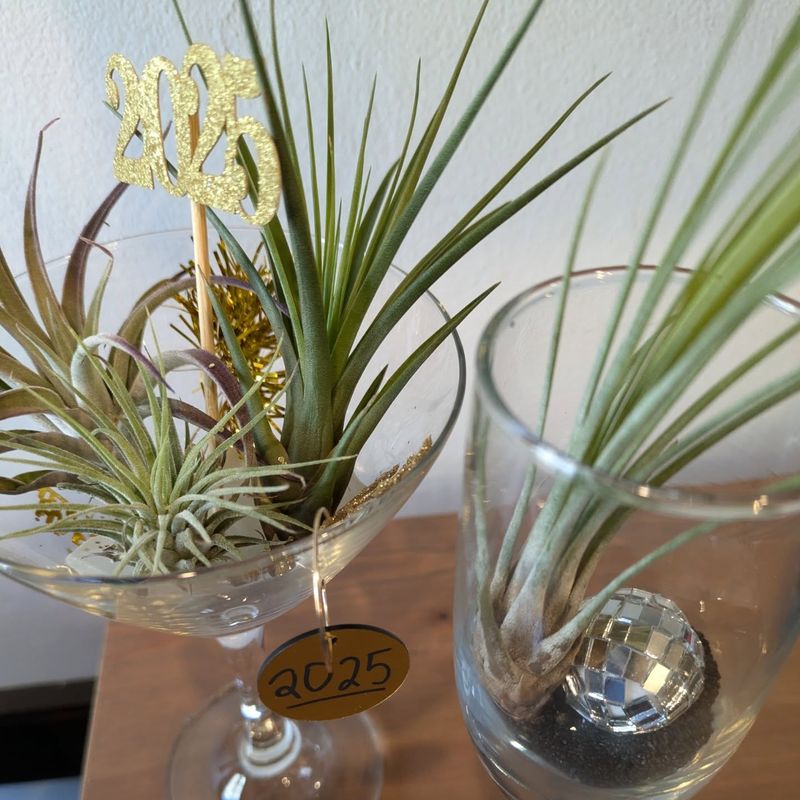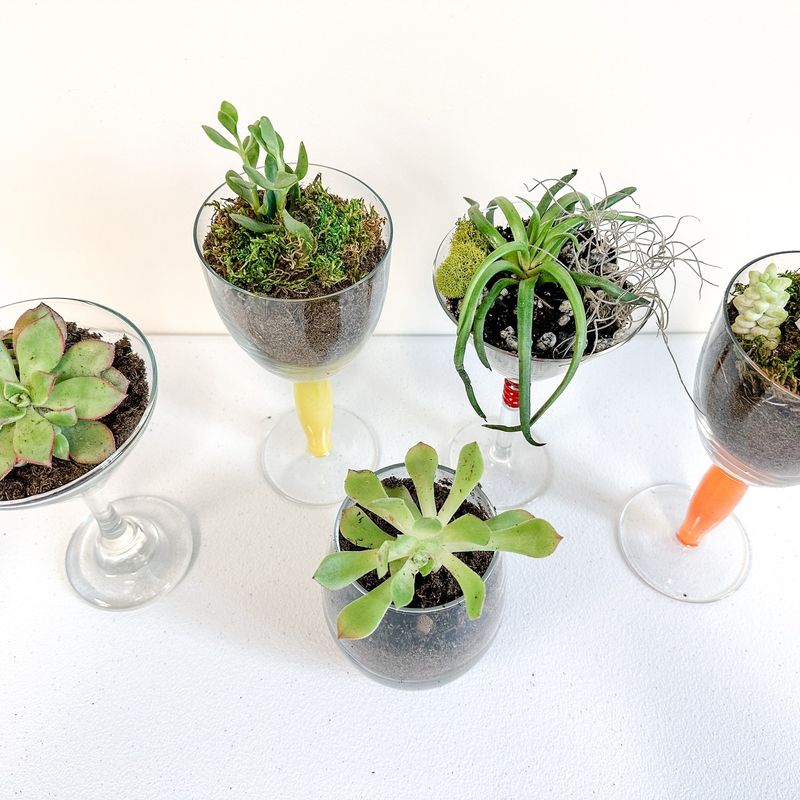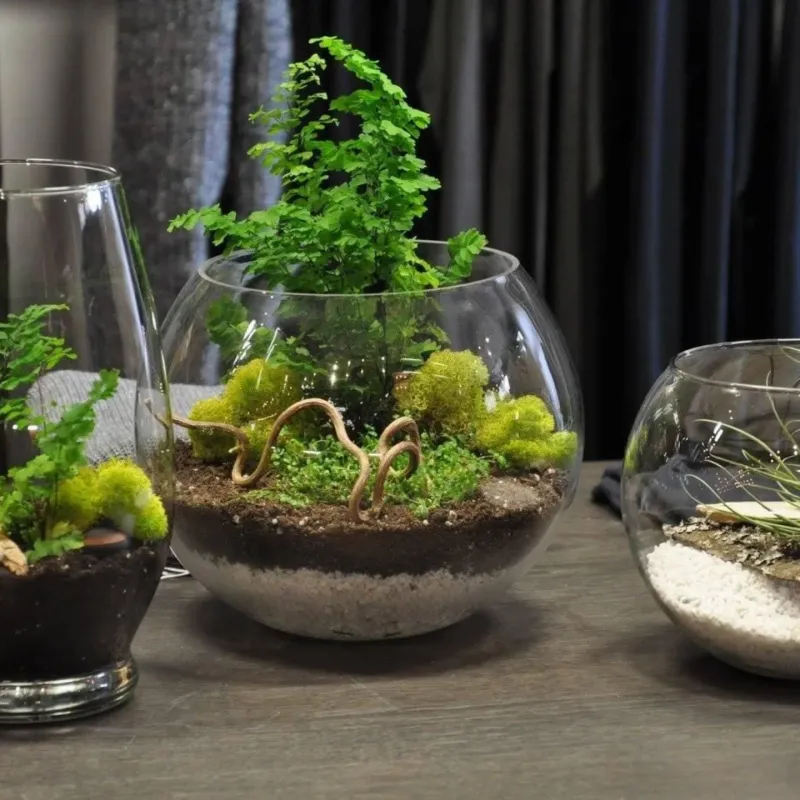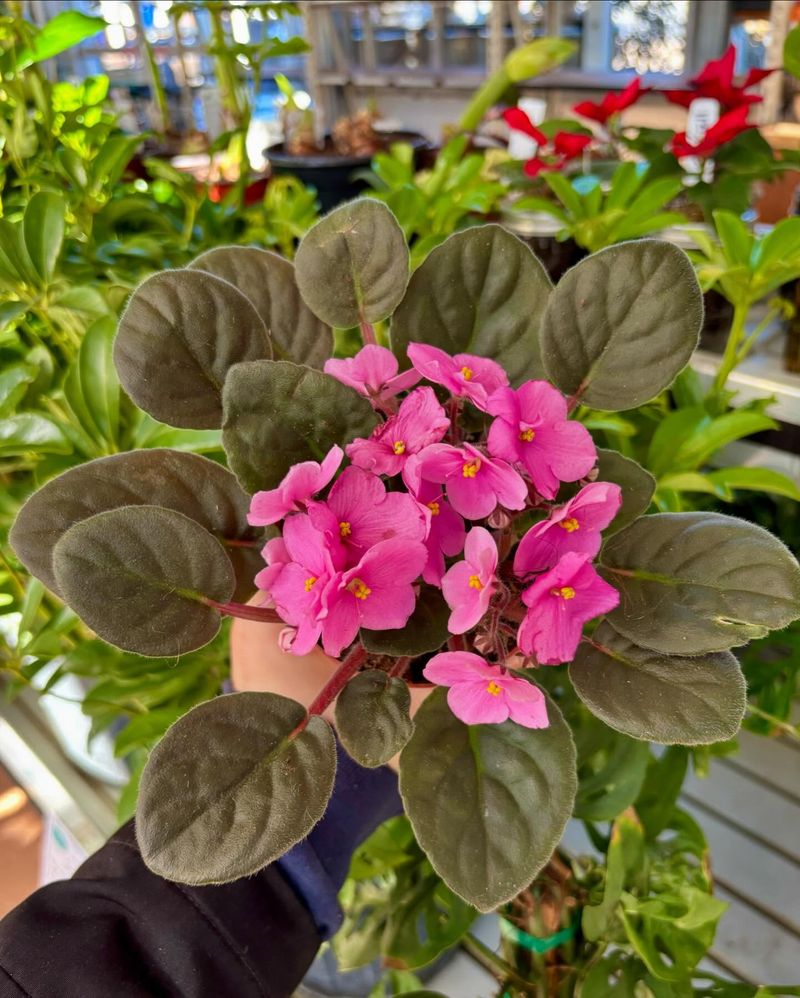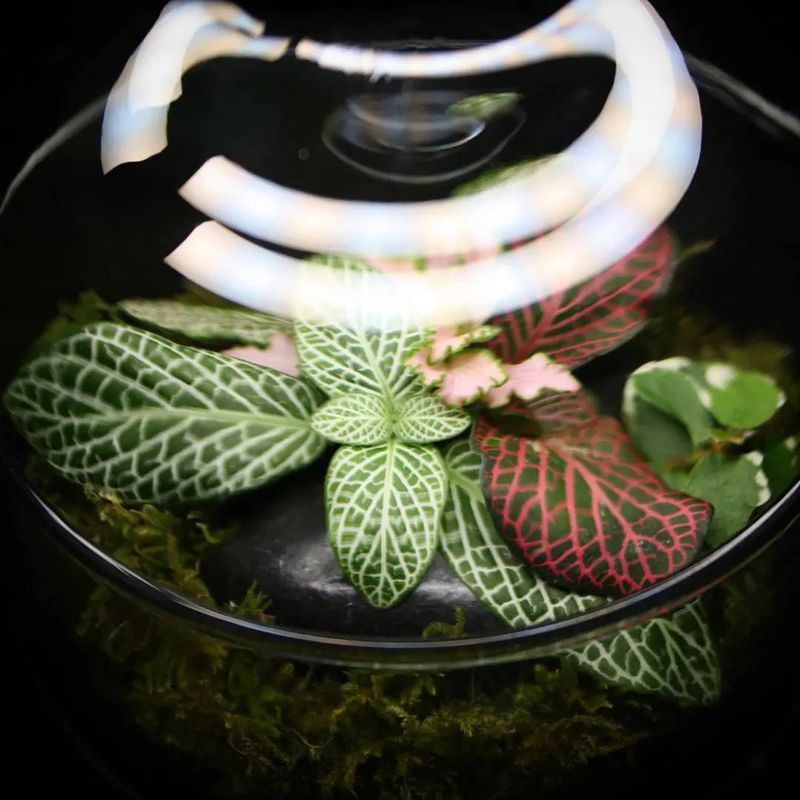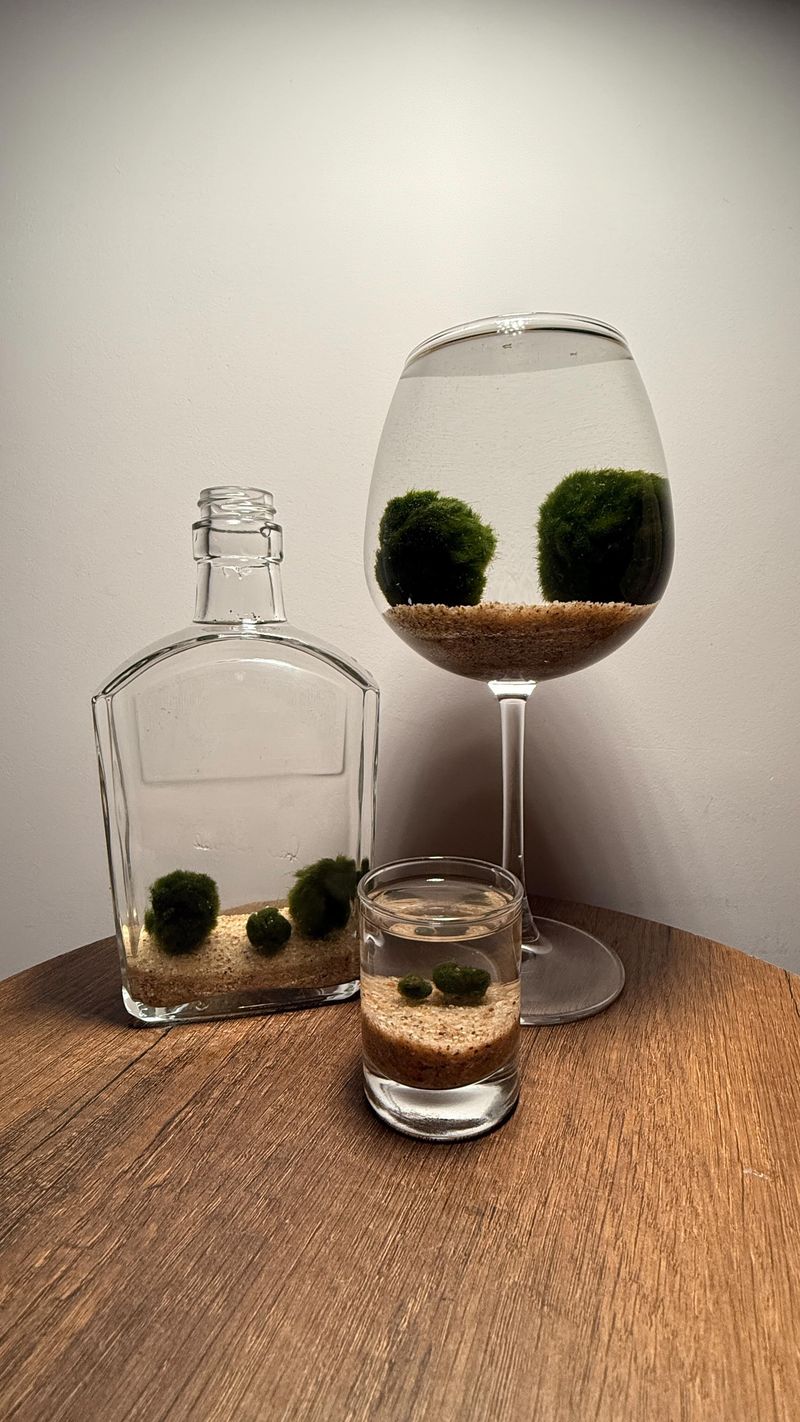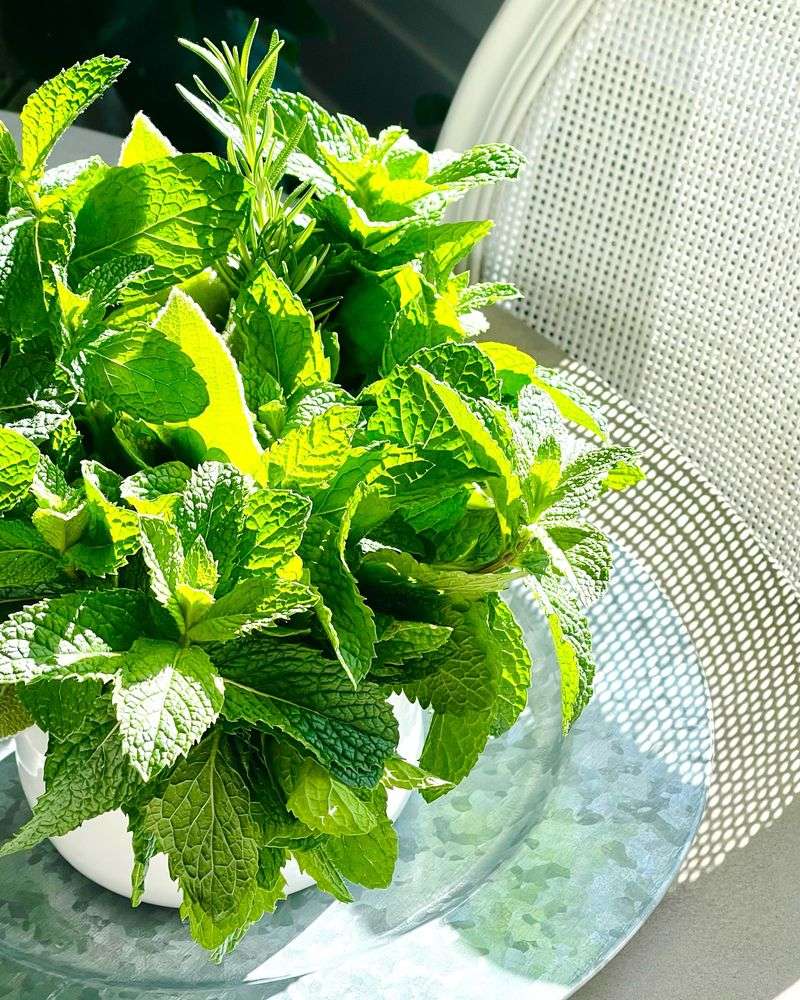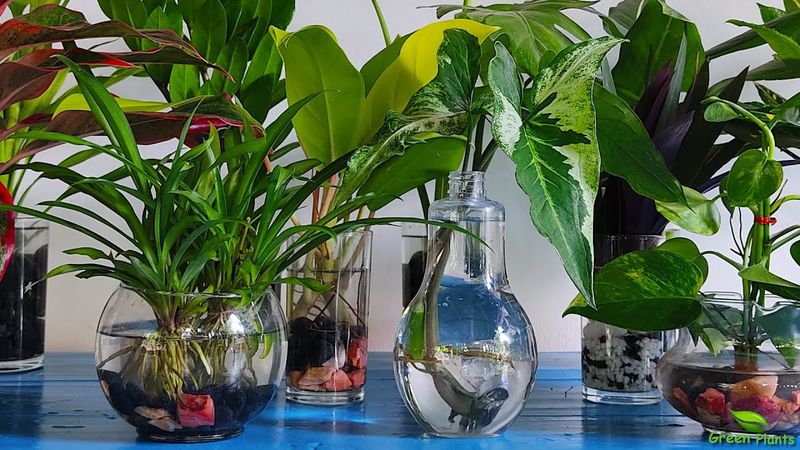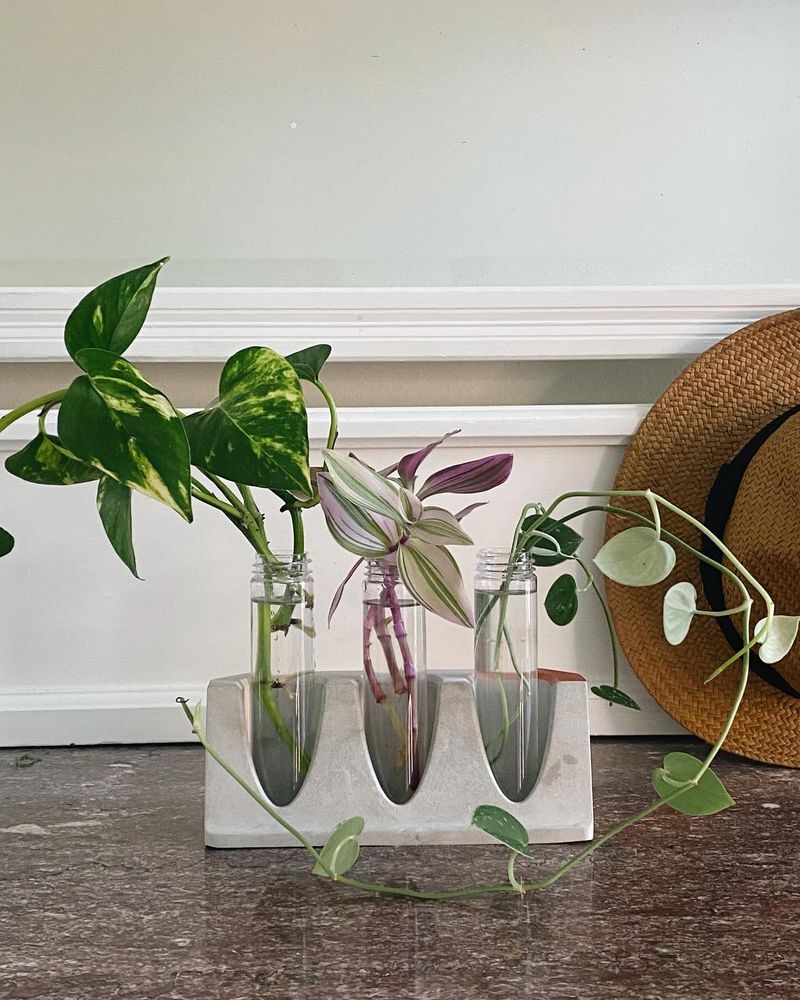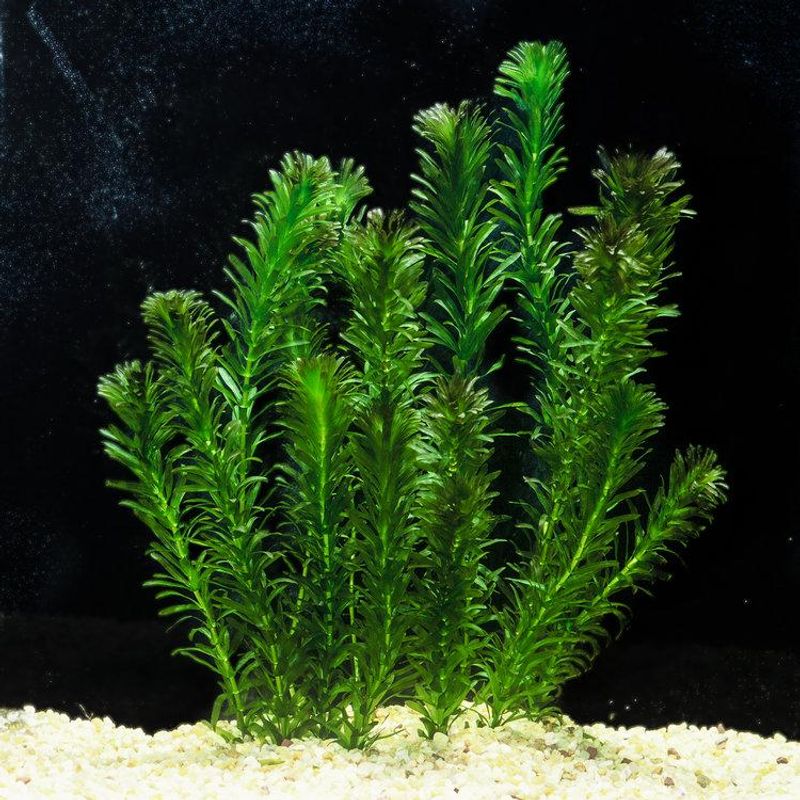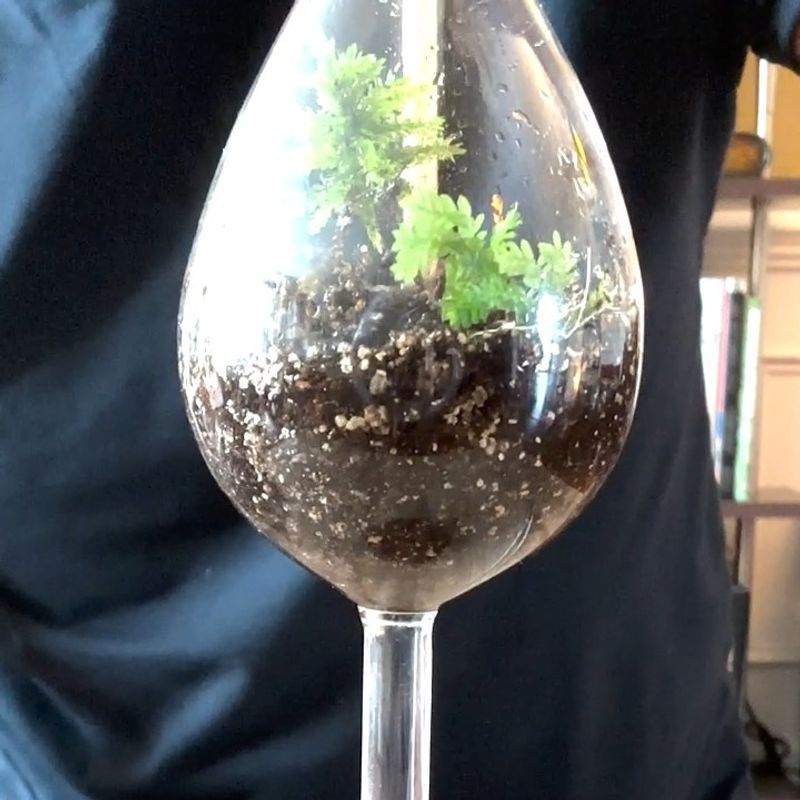Empty wine glasses don’t have to gather dust in your cabinet. They can become tiny gardens that brighten up your home! Wine glasses provide the perfect environment for small plants to thrive, letting you enjoy nature’s beauty even in limited space. With just a bit of water, pebbles, or soil, you can transform ordinary glasses into extraordinary mini ecosystems.
1. Lucky Bamboo
Lucky bamboo thrives in just water, making it perfect for wine glass gardening. Simply add colorful pebbles to the bottom of your glass for stability, then insert a bamboo stalk and fill with water until it covers the roots.
Replace the water weekly to prevent algae growth and bad smells. For extra charm, tie a small ribbon around the glass stem. Lucky bamboo symbolizes good fortune in many cultures, bringing positive energy to your space while requiring minimal care.
2. Air Plants (Tillandsia)
No soil needed for these magical little wonders! Air plants absorb nutrients through their leaves, not roots. Place them in stemless wine glasses for an eye-catching display that shows off their unique shapes.
Mist them twice weekly or soak them in water for an hour every 7-10 days. After soaking, turn them upside down to drain excess water to prevent rot. The glass creates a mini greenhouse effect while showcasing these otherworldly plants from every angle.
3. Miniature Succulents
Wine glasses offer the perfect showcase for tiny succulents! Fill the glass about one-third full with small pebbles for drainage, add cactus soil, then plant your mini succulent. Their compact size and slow growth make them ideal for this container.
Water sparingly—just a tablespoon every two weeks is plenty. Succulents store moisture in their leaves, so overwatering is worse than underwatering. Red wine glasses add a dramatic background that makes the green plants pop visually.
4. Baby Tears Plant
The delicate cascading leaves of baby tears create a gorgeous waterfall effect in wine glasses. Add activated charcoal at the bottom (prevents odor), then layer with potting soil before planting this lush little beauty.
Keep the soil consistently moist but not soggy. The high sides of wine glasses help maintain humidity that baby tears love. Place in bright, indirect light where you can admire how the tiny round leaves spill over the edges, creating a living curtain of green.
5. Moss Gardens
Transform wine glasses into miniature woodland scenes with moss! Gather different moss varieties from garden centers (never harvest from protected areas). Add pebbles for drainage, then a thin layer of activated charcoal before adding potting soil.
Press moss gently onto the soil surface. Spritz with water when the surface looks dry. The glass creates a humid environment perfect for moss growth. For extra whimsy, add tiny figurines or stones to create a magical forest scene that brings calm nature vibes indoors.
6. African Violet Babies
Young African violet plants fit perfectly in wine glasses while they’re small! Use a well-draining African violet soil mix and place the plant so its crown sits just above the soil line. The glass shape provides the humidity these plants adore.
Water from the bottom by adding water to a saucer and letting the glass sit in it for 30 minutes. African violets reward minimal care with gorgeous purple, pink, or white blooms. Just remember they’ll eventually outgrow their glass home as they mature.
7. Spider Plant Offshoots
Those dangling babies your mature spider plant produces can start their lives in wine glasses! Fill a glass with water and suspend the baby spider plant so its tiny root nubs touch the water. Watch as roots develop over the next few weeks.
Once roots are about an inch long, you can keep it in water or transfer to soil. Spider plants are nearly impossible to kill, making them perfect for beginners. The wine glass magnifies the root development, turning plant propagation into a fascinating science experiment kids love watching.
8. Nerve Plant (Fittonia)
The stunning veined leaves of nerve plants create a colorful display in wine glasses. Layer pebbles, activated charcoal, and potting soil, leaving room for the plant. These tropical beauties love high humidity, which the glass naturally provides.
When leaves start to droop, it’s time to water. The glass sides allow you to monitor soil moisture levels easily. Nerve plants come in striking colors—pink, red, or white veins against green—making them living art pieces. The wine glass acts like a mini greenhouse, helping maintain the tropical environment they crave.
9. Marimo Moss Balls
These aren’t actually moss but algae balls from Japanese lakes! Marimo balls are perfect wine glass residents that need just water. Their velvety green spheres slowly rotate in water currents, giving them an almost pet-like quality.
Change the water every two weeks and give them a gentle squeeze to clean. Add decorative pebbles or sand to the bottom of the glass for an underwater landscape effect. Unlike most plants, marimos prefer indirect light and can live for decades with minimal care, becoming family heirlooms.
10. Herbs like Mint or Thyme
Small herb cuttings can thrive in wine glasses, providing both beauty and flavor for your kitchen! Take 3-4 inch cuttings from established herbs, remove lower leaves, and place in water. Roots will appear within days.
Once roots develop, you can keep them in water indefinitely or transfer to soil. Fresh mint or thyme adds a lovely scent to your space. Position them near a sunny window where their aromatic oils will release when warmed by sunlight, filling your kitchen with their fresh scent.
11. Peace Lily Sprouts
Baby peace lilies thrive in wine glasses filled with just water! When dividing a mature peace lily, place the smallest offshoots in a wine glass with their roots submerged. The clear glass showcases the developing white root system.
Change the water weekly to keep it fresh. The tall stem of a wine glass complements the elegant growth habit of these plants. Peace lilies are natural air purifiers, removing toxins from your home while adding a touch of sophistication with their glossy leaves and occasional white blooms.
12. Pothos Cuttings
Pothos vines create a dramatic cascade effect in wine glasses! Cut a few inches of vine with 2-3 leaves, making sure to include a node (bumpy part where roots emerge). Place in water, and roots will form within days.
The trailing vines look stunning draped over the glass edge. Pothos comes in variegated patterns of green, white, yellow, or marble, adding visual interest. These hardy plants can live in water indefinitely, though they grow faster if eventually transferred to soil after rooting.
13. Venus Flytrap
Create a conversation starter with a mini carnivorous garden! Venus flytraps require special conditions, so use distilled water and sphagnum moss instead of soil in your wine glass. The glass walls let you observe the fascinating trapping mechanism in action.
Place in bright light and keep the moss consistently damp. Feed occasionally with small insects if growing indoors where bugs are scarce. The dramatic red interior of the traps contrasts beautifully with the glass container, creating a unique desktop attraction that fascinates both children and adults.
14. Aquatic Plants like Anacharis
Turn wine glasses into mini aquascapes with aquatic plants! Anacharis is perfect—just drop stems into water and watch them grow. No soil needed! Add small decorative stones at the bottom for a finished look.
These oxygen-producing plants help purify water naturally. Change water weekly to keep it clear. For extra fun, add a small aquarium snail or two to create a self-contained ecosystem. The curved glass magnifies the underwater world, creating a mesmerizing living decoration for your desk or shelf.
15. Miniature Ferns
Tiny fern varieties add a prehistoric touch to wine glass gardens! Create a terrarium effect by adding pebbles, activated charcoal, and potting soil. Button ferns or table ferns work perfectly due to their compact size.
Mist regularly to maintain humidity or cover temporarily with plastic wrap to create a self-watering environment. The delicate, feathery fronds of ferns create intricate patterns against the glass. These ancient plants bring a touch of woodland magic to any room, thriving in the protected environment the glass provides.
16. Wandering Jew (Tradescantia)
The purple, silver-striped leaves of wandering jew create a stunning color display in wine glasses. Start with a cutting in water until roots form, then transfer to soil in the glass or keep it in water permanently.
Their fast growth means you’ll soon have beautiful trailing vines cascading down the sides. The purplish-green leaves have an almost metallic sheen that catches light beautifully. Place in bright, indirect light to maintain the intense purple coloration, which becomes more vibrant with proper lighting.

